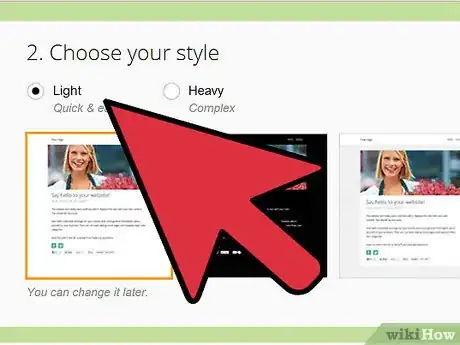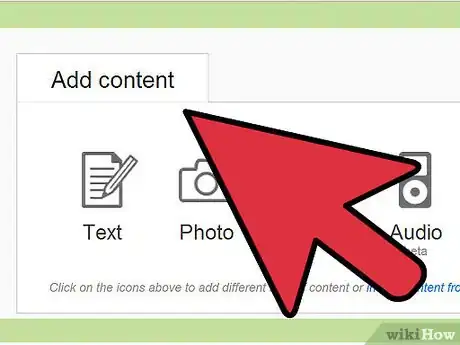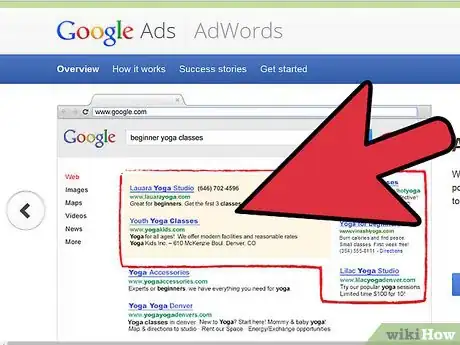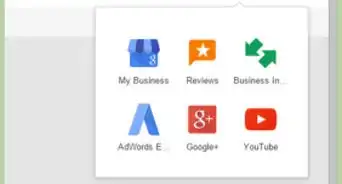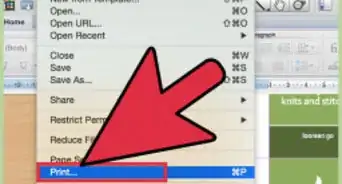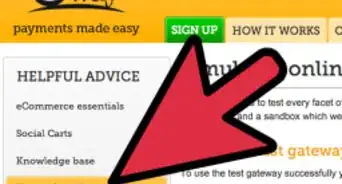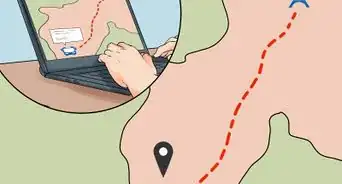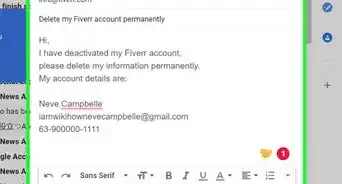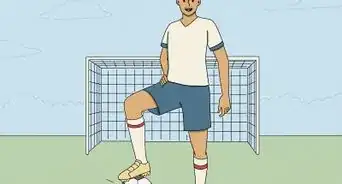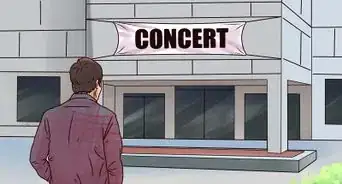This article was co-authored by Sarah Harkleroad. Sarah Harkleroad is a Marketing & Branding Expert and a Co-Founder and Brand Manager at Daor Design. With over 15 years of experience, she specializes in brand strategy, logo design, website design, and marketing for small businesses. Sarah holds a BA in Graphic Design, a BA in Fine & Studio Arts, and a Minor in Business Administration & Management - all from Cedarville University. To date, she and her team at Daor Design have helped over 450 small businesses across the country build their brands.
wikiHow marks an article as reader-approved once it receives enough positive feedback. This article received 98 testimonials and 83% of readers who voted found it helpful, earning it our reader-approved status.
This article has been viewed 1,818,518 times.
If you have a marketable skill or business, a website can help you connect with customers, do some marketing, and yes, make money. Websites are a super powerful tool for business savvy people and if you want to learn how to make your own site, you've come to the right place! We'll explain how you can transform your career (and your bank account) through a brand new website. Read on for our complete guide!
Steps
Creating A Website
-
1Define your goal. In order to attract any investors (in the form of advertisers), you must have a place for them to sell their wares. Attracting advertisers must be your primary goal, as that is what will make your financial aspirations a success.[1]
- Know what advertisers or ad placement algorithms are looking for in an advertising venue (i.e., your website): generally, it's potential buyers with disposable income who visit your site in significant numbers, and would be interested in products that are closely related to the content on your site.
- What you want in a site, then, is to attract—and keep—a lot of visitors. The longer they stay, the more likely it is that they will eventually leave your site by clicking not on the back button, but on your advertiser's links.
-
2Find a market. To generate the most traffic, and thus the most revenue, be selective in your target market. While every demographic has its strong points and weak points, studies have shown that younger people are generally more optimistic and more adventurous—and thus likely to click on an advertisement more readily.
- Keep in mind that the goal is clicks, not sales: that's what generates your revenue. Once the visitor has clicked out of your site, it's up to the merchant to make the sale. You get paid, regardless of the outcome.
- Search the web for trends and ideas for websites, and include the year in your search so that you avoid wasting search results on what was hot in 2006. For example, searching Google for "website ideas 2012" returned nearly a billion results. From there, it's just a matter of combing through to find ideas that pique your interest.
Advertisement -
3Secure a domain. In the halcyon days of the early 21st century, you could create a business name, and find a domain to match. These days, it's virtually impossible. However, you can be creative with hyphenated names. While "geeks.com" (and .net, .org, even .xxx) is taken, trying something like "website-4-g33ks" instead.
- One good way to proceed is to secure a ".com" domain, find a host (many domain registrars will also host sites), and build your own site. This has the advantage of being the most flexible in terms of design and installation of custom code.
- Alternately, you can sign up with a service such as Blogger, from Google, or Wordpress—both of which will not only let you put your site name in front of their service name (e.g., geeks.wordpress.com), they will give you that and a website for free. The advantage, aside from that, is that Blogger and Wordpress give you a great number of really well-designed templates to make your site look visually awesome. The downside is that generally takes having a "pro" version (i.e., paid for) before you can do any serious customizing.
-
4Build your site. Using the templates provided, or a site of your own design (or from a designer), put together your website. What you do will be based almost entirely on the market you are attempting to reach.[2] Again, though, whether you are ultimately offering a personal service, like "Cleavon's Auto Repair Site," or a total web-centric site like "Sara's Mouth-Watering Recipes," the goal is to keep people on your site. That means the content is king—the same as it ever was.
- If you're offering a service, your site could have content specific to your specialty. Cleavon, for example, might have some basic articles on changing oil, fixing a flat, or a FAQ about all those little sounds a car might make. Sarah could feature, along with recipes, information such as weight and measure conversion, the differences between types of flours, and anecdotal tales of kitchen disasters and successes. In both cases, going beyond the basic service provided gives visitors a reason to stick around—and click on ads!
-
5Keep it fresh. Don't post one or two articles and call it a day. Remember that this is your income stream we're talking about developing, so think of it as your job—part-time or full time, you have to devote some time to it every day if you want to see the paychecks come rolling in.
- The more you write, the more interest your site will hold. The more interest your site holds, the more people will follow it. and more importantly, the more relevant your site will appear to the ad placement algorithms. More ads = more clicks = more money. Never lose sight of that goal.
Starting Advertising and Promotion
-
1Sign up for Google AdSense. AdSense will place ads for goods and services that are relevant to your site's visitors, based on the content of your site. You get paid every time an ad appears on your site, or an ad is clicked on.[3]
- You get paid a very small amount for each impression (view) or click. Therefore, the more traffic you generate, the more clicks and impressions you will have, and the more money you will receive.
-
2Promote your site. Every time you post, every time you make a change, every time you change a period to an exclamation mark or correct "teh" to "the," let the world know via Twitter, Facebook, Tumblr, LinkedIn, and all the rest of the social media world. The key is to spread the word.
- Have accounts on all of the above and make sure you have prominent links to your website on all of them.
- Start an email campaign as well. Once a week, publish a "best of my site" HTML email—frequent enough that people enjoy the content, but not so much that it becomes spammy.
-
3Pay attention to your metrics. Find which ads work best, and do more ads and pages like those.
- By continually refining your process, each visit will be a higher value for revenue generation. Always remember: the longer they stay, the bigger your paycheck will be. Good luck!
-
4Sign up as an affiliate. Companies use affiliate programs to boost their online sales, and most of these affiliate programs are free to join. Every time a visitor buys an item through the affiliate link on your website, you earn an affiliate commission.
Expert Q&A
-
QuestionAre the free website builders good?
 Sarah HarkleroadSarah Harkleroad is a Marketing & Branding Expert and a Co-Founder and Brand Manager at Daor Design. With over 15 years of experience, she specializes in brand strategy, logo design, website design, and marketing for small businesses. Sarah holds a BA in Graphic Design, a BA in Fine & Studio Arts, and a Minor in Business Administration & Management - all from Cedarville University. To date, she and her team at Daor Design have helped over 450 small businesses across the country build their brands.
Sarah HarkleroadSarah Harkleroad is a Marketing & Branding Expert and a Co-Founder and Brand Manager at Daor Design. With over 15 years of experience, she specializes in brand strategy, logo design, website design, and marketing for small businesses. Sarah holds a BA in Graphic Design, a BA in Fine & Studio Arts, and a Minor in Business Administration & Management - all from Cedarville University. To date, she and her team at Daor Design have helped over 450 small businesses across the country build their brands.
Marketing & Branding Expert They'll definitely work, but the quality of your website may not necessarily be up to par. It's not a terrible place to start, though! You can always upgrade later if you'd like.
They'll definitely work, but the quality of your website may not necessarily be up to par. It's not a terrible place to start, though! You can always upgrade later if you'd like. -
QuestionHow do I get more traffic on my site?
 Sarah HarkleroadSarah Harkleroad is a Marketing & Branding Expert and a Co-Founder and Brand Manager at Daor Design. With over 15 years of experience, she specializes in brand strategy, logo design, website design, and marketing for small businesses. Sarah holds a BA in Graphic Design, a BA in Fine & Studio Arts, and a Minor in Business Administration & Management - all from Cedarville University. To date, she and her team at Daor Design have helped over 450 small businesses across the country build their brands.
Sarah HarkleroadSarah Harkleroad is a Marketing & Branding Expert and a Co-Founder and Brand Manager at Daor Design. With over 15 years of experience, she specializes in brand strategy, logo design, website design, and marketing for small businesses. Sarah holds a BA in Graphic Design, a BA in Fine & Studio Arts, and a Minor in Business Administration & Management - all from Cedarville University. To date, she and her team at Daor Design have helped over 450 small businesses across the country build their brands.
Marketing & Branding Expert Keyword integration is a huge component of this. You have to incorporate language and keywords that people are searching for, and the user's intent has to align with your content. A lot of this also just comes down to time. It takes time for users to start finding your website.
Keyword integration is a huge component of this. You have to incorporate language and keywords that people are searching for, and the user's intent has to align with your content. A lot of this also just comes down to time. It takes time for users to start finding your website. -
QuestionCan I earn a decent amount if I make a website using a CMS?
 Community AnswerYes, just place ad units inside of the website. CMS stands for Content Management System, right?
Community AnswerYes, just place ad units inside of the website. CMS stands for Content Management System, right?
References
About This Article
Once you’ve found a topic for your website, build your site on your domain of choice, like Blogger or Wordpress. Once your website is up and running, sign up for Google AdSense in order to receive money from ads on your page. Always make sure to update your website regularly with new content to keep your audience engaged, or try promoting your site on social media for an even larger reach. To learn other methods of earning money, such as becoming an affiliate, continue on to the article!




